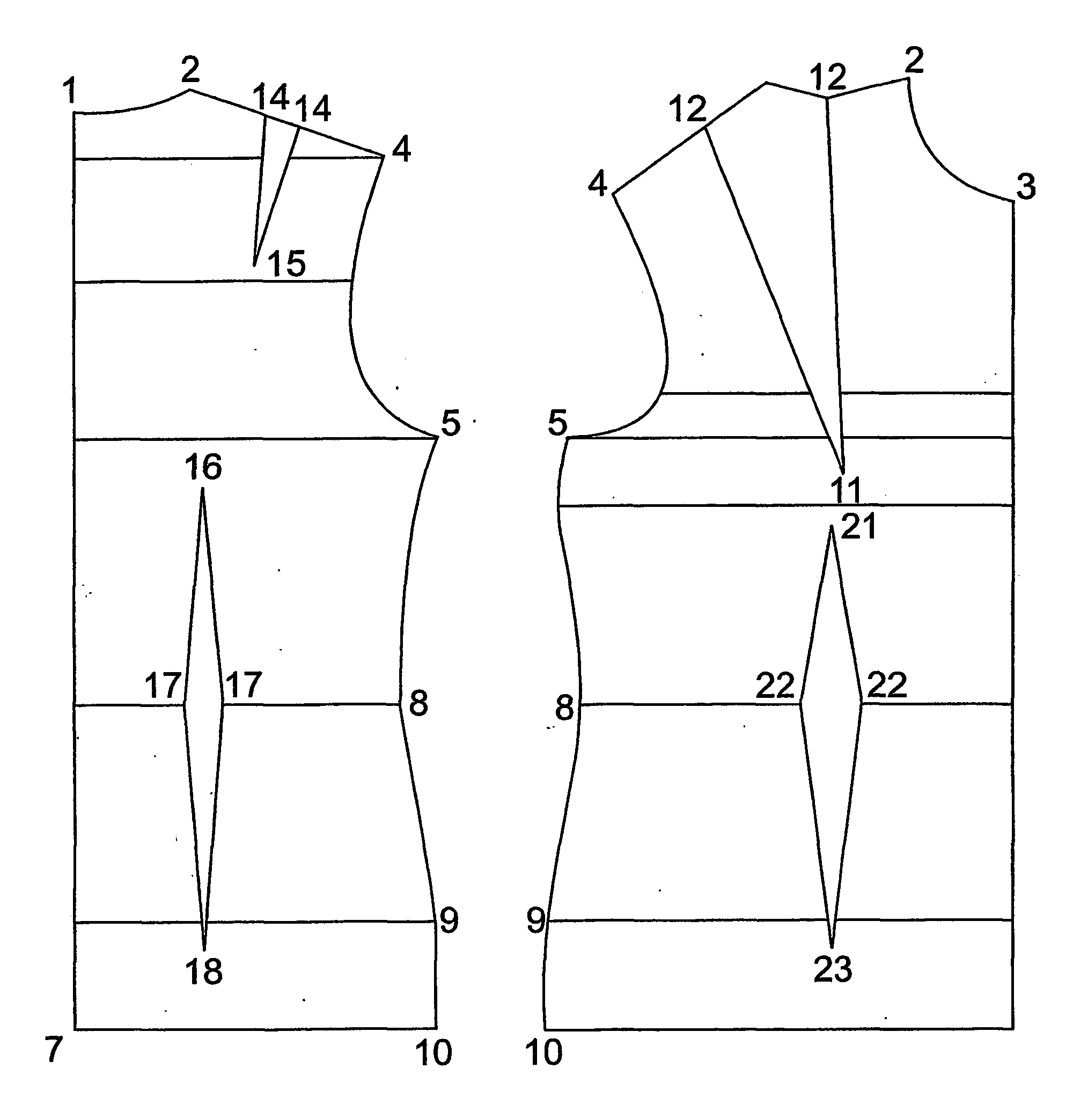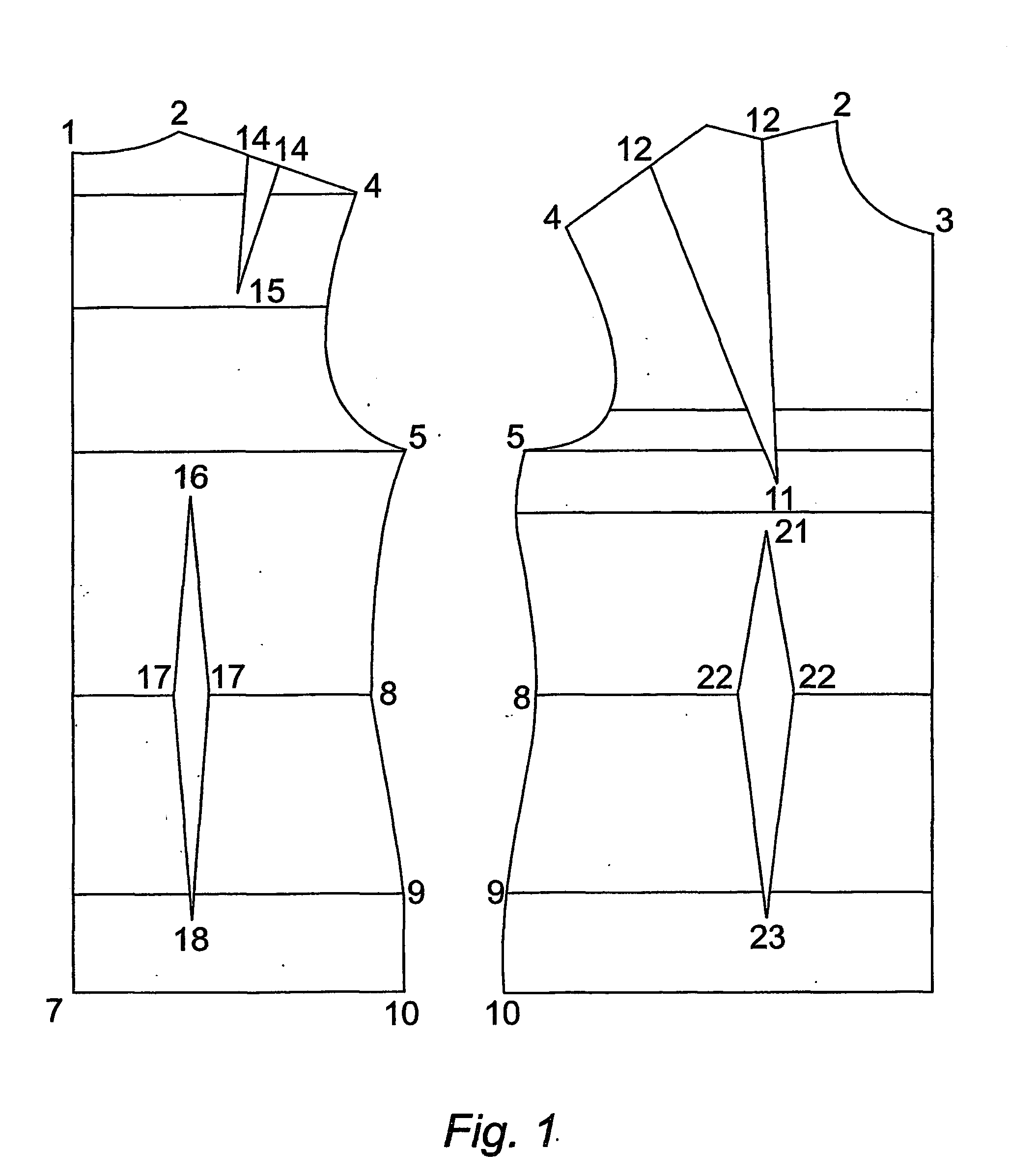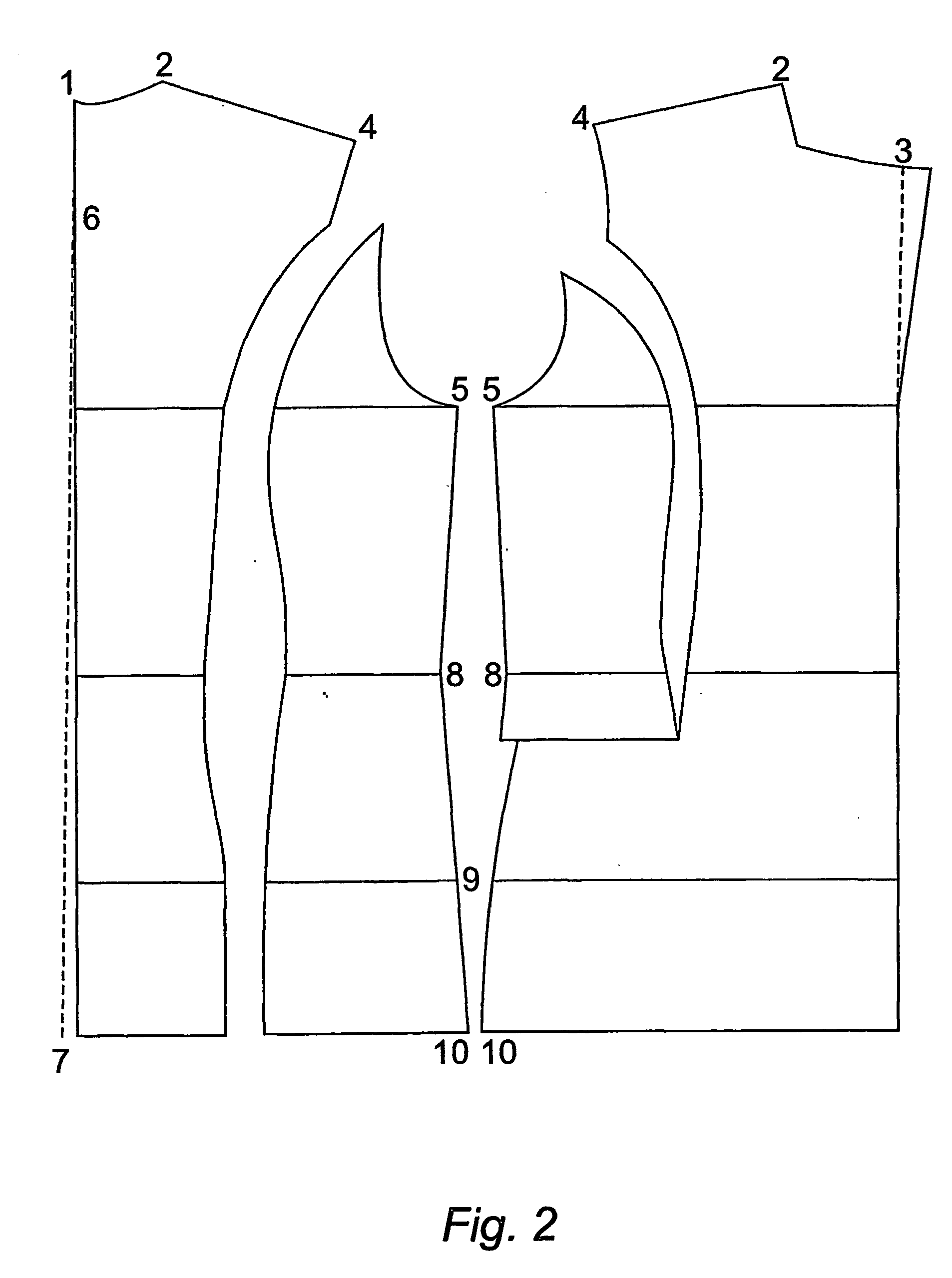Production and visualisation of garments
a technology for visualisation and garments, applied in the field of production and visualisation of garments, can solve the problems of not meeting the requirements, unable to ensure that the modified garment will preserve the design or style of the base garment, and none of the prior proposals have satisfactorily addressed the practical issues involved in providing an integrated suite of technologies
- Summary
- Abstract
- Description
- Claims
- Application Information
AI Technical Summary
Benefits of technology
Problems solved by technology
Method used
Image
Examples
Embodiment Construction
[0051] Embodiments of the present invention will now be described, by way of example only, with reference to the drawings, in which:
[0052] FIGS. 1 to 29 illustrate garment pattern pieces, including design points in accordance with the invention, as follow:
[0053] FIG. 1: basic woman's bodice block
[0054] FIG. 2: main pattern pieces for woman's jacket bodice
[0055] FIG. 3: main pattern pieces for man's jacket bodice
[0056] FIG. 4: bust darts
[0057] FIG. 5: Shoulder blade dart
[0058] FIG. 6: dart concealed in back panel finishing on shoulder line
[0059] FIG. 7: dart concealed in back panel finishing on armhole
[0060] FIG. 8: simple internal front waist dart
[0061] FIG. 9: half dart / half cut on front piece
[0062] FIG. 10: Combined bust and waist dart
[0063] FIG. 11: Armhole and sleeve
[0064] FIG. 12: Halter neck bodice
[0065] FIG. 13: Yoke with additional fullness
[0066] FIG. 14: Saddle yoke
[0067] FIG. 15: Styles of collars
[0068] FIG. 16: Revers
[0069] FIG. 17: Wraps
[0070] FIG. 18: Capes
[0071] FIG. 1...
PUM
 Login to View More
Login to View More Abstract
Description
Claims
Application Information
 Login to View More
Login to View More - R&D
- Intellectual Property
- Life Sciences
- Materials
- Tech Scout
- Unparalleled Data Quality
- Higher Quality Content
- 60% Fewer Hallucinations
Browse by: Latest US Patents, China's latest patents, Technical Efficacy Thesaurus, Application Domain, Technology Topic, Popular Technical Reports.
© 2025 PatSnap. All rights reserved.Legal|Privacy policy|Modern Slavery Act Transparency Statement|Sitemap|About US| Contact US: help@patsnap.com



